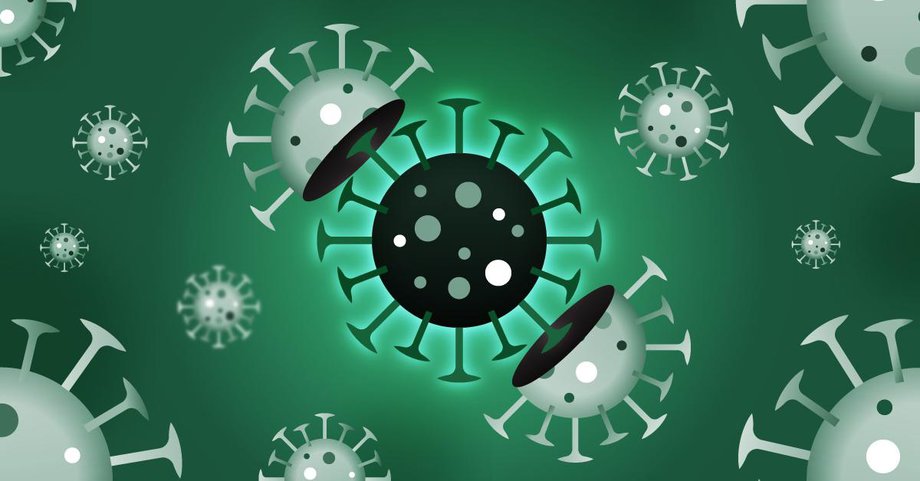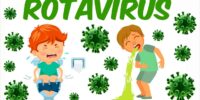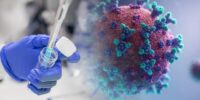Can Viruses Mutate and Adapt Within the Human Body?

This article explores the phenomenon of viral mutation and adaptation within the human body. It aims to provide an understanding of the mechanisms by which viruses mutate, the factors that influence their adaptation, and the role of immune responses in virus evolution.
Furthermore, it delves into the implications of viral mutation and adaptation for public health, as well as strategies for tracking, monitoring, and preventing these events.
By adopting an objective and impersonal approach, this article seeks to present a comprehensive analysis of the topic at hand.
Key Takeaways
- Viruses can undergo genetic alterations, such as point mutations, recombination, and reassortment, leading to their evolution and adaptation.
- Understanding viral adaptation in the human body is crucial for predicting potential virulence or treatment resistance, and for developing prevention and treatment strategies.
- Viral mutation and adaptation play a significant role in evading the immune response, making them important considerations for antiviral therapies and the development of vaccines.
- The human body employs innate and adaptive immune responses as defense mechanisms against viral pathogens, including the recognition and elimination of viruses.
The Mechanisms of Viral Mutation
The mechanisms of viral mutation involve genetic alterations in the viral genome that can occur through various processes such as point mutations, recombination, and reassortment. These mechanisms play a crucial role in viral evolution, allowing viruses to adapt to new environments and host species.
Point mutations involve small changes in the nucleotide sequence of the viral genome, resulting in single base pair substitutions. Recombination occurs when two different viral genomes exchange genetic material, leading to the creation of novel viral strains. Reassortment is a process specific to segmented viruses, where different viral segments mix and match during co-infection, giving rise to new viral strains with mixed genetic material.
These mechanisms contribute to the diversity of viral populations and drive the emergence of new viral variants, influencing viral mutation patterns and their ability to adapt within the human body.
Understanding Viral Adaptation in the Human Body
This discussion aims to explore the concepts of viral mutation and adaptation within the human body, as well as the mechanisms employed by the human body to defend against viral invasion.
Viral mutation refers to the genetic changes that occur in viruses over time, allowing them to adapt and potentially become more virulent or resistant to treatment. Understanding how viruses mutate and adapt within the human body is crucial for the development of effective prevention and treatment strategies.
Additionally, the human body possesses various defense mechanisms, such as the innate and adaptive immune responses, that work together to recognize and eliminate viral pathogens, providing a crucial line of defense against viral infections.
Viral Mutation and Adaptation
Viral mutation and adaptation are processes through which viruses can undergo genetic changes and acquire new traits. These mechanisms of viral evolution play a crucial role in the survival and persistence of viruses within their hosts.
Viral mutation occurs when there are errors in the replication of the viral genome, leading to the introduction of genetic variations. These mutations can result in changes in viral proteins, such as surface glycoproteins, which are targeted by the host immune system.
Consequently, viral adaptation allows viruses to evade the immune response and enhance their infectivity or virulence. Understanding the mechanisms of viral evolution is vital for the development of effective antiviral therapies. Targeting specific viral proteins or exploiting vulnerabilities in the viral replication cycle can help combat viral infections.
Additionally, knowledge of viral mutation and adaptation can guide the development of vaccines that elicit immune responses against multiple viral strains, increasing their efficacy and potential for controlling viral outbreaks.
Human Body Defense Mechanisms
Host defense mechanisms play a crucial role in protecting against pathogenic invaders and maintaining the homeostasis of the internal environment. The human body has evolved a complex immune system response to ward off potential threats.
This immune response involves several defense mechanisms that work together to identify and eliminate foreign substances.
- Innate immunity: This is the body’s first line of defense and includes physical barriers like the skin and mucous membranes, as well as cells like macrophages and neutrophils that engulf and destroy pathogens.
- Adaptive immunity: This is a more specialized defense mechanism that involves the production of antibodies and activation of immune cells, such as T and B lymphocytes, to specifically target and eliminate pathogens.
- Inflammatory response: Inflammation is a protective response triggered by the immune system to remove pathogens and initiate tissue repair.
These defense mechanisms work in harmony to protect the body from harmful invaders and maintain its overall well-being.
Factors Influencing Viral Mutation and Adaptation
This discussion will focus on the factors that influence viral mutation and adaptation.
One important factor is the environmental influences on mutation, which can include factors such as temperature, pH levels, and exposure to chemicals.
Additionally, the host immune response plays a crucial role in shaping viral mutation and adaptation, as it exerts selective pressure on the viruses.
Lastly, the genetic variability in viruses also contributes to their ability to mutate and adapt, as it provides a diverse pool of genetic material for selection and evolution.
Environmental Influences on Mutation
Environmental factors play a significant role in influencing the mutation rates of viruses within the human body. These factors can have both positive and negative influences on the evolution of viruses and their impact on disease transmission.
- Temperature: Fluctuations in temperature can affect the replication and mutation rates of viruses. Higher temperatures may increase mutation rates, leading to the emergence of new viral strains.
- Humidity: Changes in humidity levels can influence the survival and transmission of viruses. Higher humidity may enhance viral transmission, while lower humidity can reduce it.
- UV radiation: Exposure to ultraviolet (UV) radiation can cause mutations in viral genomes, affecting their ability to replicate and causing changes in disease severity.
- Environmental pollutants: Chemical pollutants present in the environment can interact with viral particles, altering their genetic material and potentially leading to the emergence of drug-resistant strains.
These environmental influences highlight the dynamic relationship between viruses and their surroundings, shaping their evolution and ultimately impacting disease transmission.
Host Immune Response
The immune response of the host plays a crucial role in determining the outcome of viral infections. The host immune response can either effectively control and eliminate the virus or allow it to persist and potentially mutate. Several factors influence viral mutation within the host, including the strength and specificity of the immune response, the duration and intensity of the infection, and the genetic diversity of the virus population. Additionally, host factors such as age, overall health, and co-infections can also impact the immune response and subsequently influence viral mutation. Understanding these factors is vital for developing effective strategies to prevent and treat viral infections.
| Factors influencing viral mutation within the host |
|---|
| Strength and specificity of the immune response |
| Duration and intensity of the infection |
| Genetic diversity of the virus population |
Genetic Variability in Viruses
Genetic variability in viruses is influenced by factors such as the rate of mutation, recombination events, and selection pressures.
These factors contribute to the genetic variation observed among viral populations and play a crucial role in viral evolution.
The rate of mutation is a fundamental driver of genetic variation as it introduces random changes in the viral genome.
Recombination events, on the other hand, can occur when two different strains of the same virus infect the same host cell, leading to the exchange of genetic material. This process further increases genetic diversity within viral populations.
Additionally, selection pressures, such as the host immune response or antiviral treatments, can shape the genetic composition of viral populations by favoring certain genetic variants that confer a survival advantage.
Understanding the mechanisms underlying genetic variability in viruses is crucial for developing effective strategies to control viral infections.
The Role of Immune Responses in Virus Evolution
Host immune responses play a crucial role in shaping the evolution of viruses. Immune evasion strategies employed by viruses are essential for their survival and replication within the host.
These strategies enable viruses to avoid detection and elimination by the host immune system, allowing them to persist and continue their replication cycle. Immune evasion mechanisms include antigenic variation, interference with host immune signaling pathways, and modulation of host immune responses.
By evading the immune system, viruses can increase their viral fitness, which refers to their ability to replicate and spread within the host population. Viral fitness is influenced by various factors, such as immune selection pressure, host immune status, and the effectiveness of viral immune evasion strategies.
Understanding the interplay between viral immune evasion and host immune responses is crucial for developing effective antiviral therapies and vaccines.
Viral Mutation and Adaptation in the Context of Infectious Diseases
Infectious diseases are influenced by viral mutations and adaptations that occur in response to various environmental factors. Understanding the mechanisms behind viral mutation and adaptation is crucial for predicting the behavior and spread of infectious diseases.
Here are four key mechanisms and their implications:
- Genetic mutations: Viruses can undergo spontaneous genetic mutations, leading to changes in their genetic material. This can result in altered viral proteins, which may affect the virus’s ability to infect host cells or evade the immune system.
- Recombination: Viruses can also exchange genetic material with other viruses during co-infection, leading to the formation of new viral strains. Recombination can enhance viral fitness and increase the likelihood of viral transmission.
- Selection pressure: Environmental factors, such as antiviral drugs or immune responses, exert selective pressure on viruses. This can drive the emergence of drug-resistant or immune-evasive viral strains, posing challenges for disease control.
- Host adaptation: Viruses can adapt to specific host species, allowing them to efficiently replicate and spread within a particular host population. This host adaptation can increase the severity and transmissibility of infectious diseases.
Understanding the mechanisms underlying viral mutation and adaptation has important implications for the development of effective antiviral strategies and the prediction of future disease outbreaks.
Implications of Viral Mutation and Adaptation for Public Health
The understanding of viral mutation and adaptation in the context of infectious diseases has important implications for public health.
As viruses mutate and adapt, they can become more transmissible, virulent, or resistant to treatment, posing significant challenges for disease control and prevention efforts.
The ability of viruses to evolve within the human body can lead to the emergence of new strains and variants, which may require updates to diagnostic tests, therapeutics, and vaccines.
Public health agencies must closely monitor viral mutations and adapt their strategies for prevention and control accordingly. This may involve implementing measures such as enhanced surveillance, early detection, and rapid response to emerging viral variants.
Additionally, promoting vaccination and adherence to preventive measures, such as hand hygiene and mask-wearing, can help mitigate the spread and impact of mutated viruses.
Tracking and Monitoring Viral Mutations Within the Human Body
Tracking and monitoring the occurrence of viral mutations in individuals is crucial for understanding the dynamics of viral evolution and its potential impact on public health. With the rapid spread of viruses, such as the SARS-CoV-2 virus responsible for the COVID-19 pandemic, tracking methods have become essential in identifying and characterizing viral mutations. These mutations can have diagnostic implications, affecting the accuracy of diagnostic tests and the effectiveness of treatments. By monitoring viral mutations, scientists can identify emerging variants that may be more transmissible, resistant to current treatments, or capable of evading immune responses. This information can inform public health interventions, such as the development of new diagnostic tests, the modification of existing therapies, and the implementation of targeted prevention strategies. Table 1 presents some key tracking methods used in monitoring viral mutations within the human body.
Table 1: Tracking Methods for Monitoring Viral Mutations
| Method | Description | Advantages |
|---|---|---|
| Whole-genome sequencing | Determines the complete genetic makeup of the virus | Provides detailed information |
| Polymerase chain reaction (PCR) | Amplifies specific viral sequences for detection | Rapid and sensitive |
| Next-generation sequencing | High-throughput sequencing of viral genomes | Enables identification of rare variants |
Strategies for Controlling and Preventing Viral Mutation and Adaptation
One strategy for controlling and preventing viral mutation and adaptation is to develop targeted prevention strategies based on the identification of emerging variants that may be more transmissible, resistant to current treatments, or capable of evading immune responses.
This approach involves continuous surveillance and monitoring of viral genomes to detect any changes in their genetic makeup. By identifying these emerging variants, researchers can gain insights into their potential impact on viral control measures and develop specific prevention strategies.
For instance, if a particular variant is found to be more transmissible, public health authorities can implement stricter measures such as enhanced contact tracing and quarantine protocols.
Additionally, understanding the mechanisms by which viruses adapt and mutate can guide the development of vaccines and therapeutics that target specific viral components, reducing the likelihood of viral evasion and resistance.
Overall, these strategies aim to stay one step ahead of viral adaptation and minimize its impact on public health.
Frequently Asked Questions
Can Viruses Mutate and Adapt in Other Organisms Besides Humans?
Viral mutation in animals is a well-documented phenomenon. The transmission of mutated viruses between species has been observed, indicating the ability of viruses to adapt and mutate in organisms other than humans.
How Long Does It Typically Take for a Virus to Mutate and Adapt Within the Human Body?
The viral mutation timeline and factors affecting viral adaptation are important considerations in understanding how long it typically takes for a virus to mutate and adapt within a host organism.
Are Certain Viruses More Prone to Mutation and Adaptation Than Others?
Certain viruses are more prone to mutation and adaptation than others. Understanding the factors that contribute to this variability is crucial for assessing their potential to evolve within the human body.
Can Viral Mutations Within the Human Body Lead to the Development of New Strains or Variants?
Viral evolution occurs through the accumulation of genetic diversity, leading to the development of new strains or variants. Within the human body, viral mutations can contribute to this process, potentially resulting in the emergence of novel viral phenotypes.
What Are the Potential Consequences of Viral Mutation and Adaptation for the Effectiveness of Vaccines and Treatments?
The potential implications of viral mutation and adaptation include the development of new strains or variants, which can have an impact on public health by affecting the effectiveness of vaccines and treatments.









